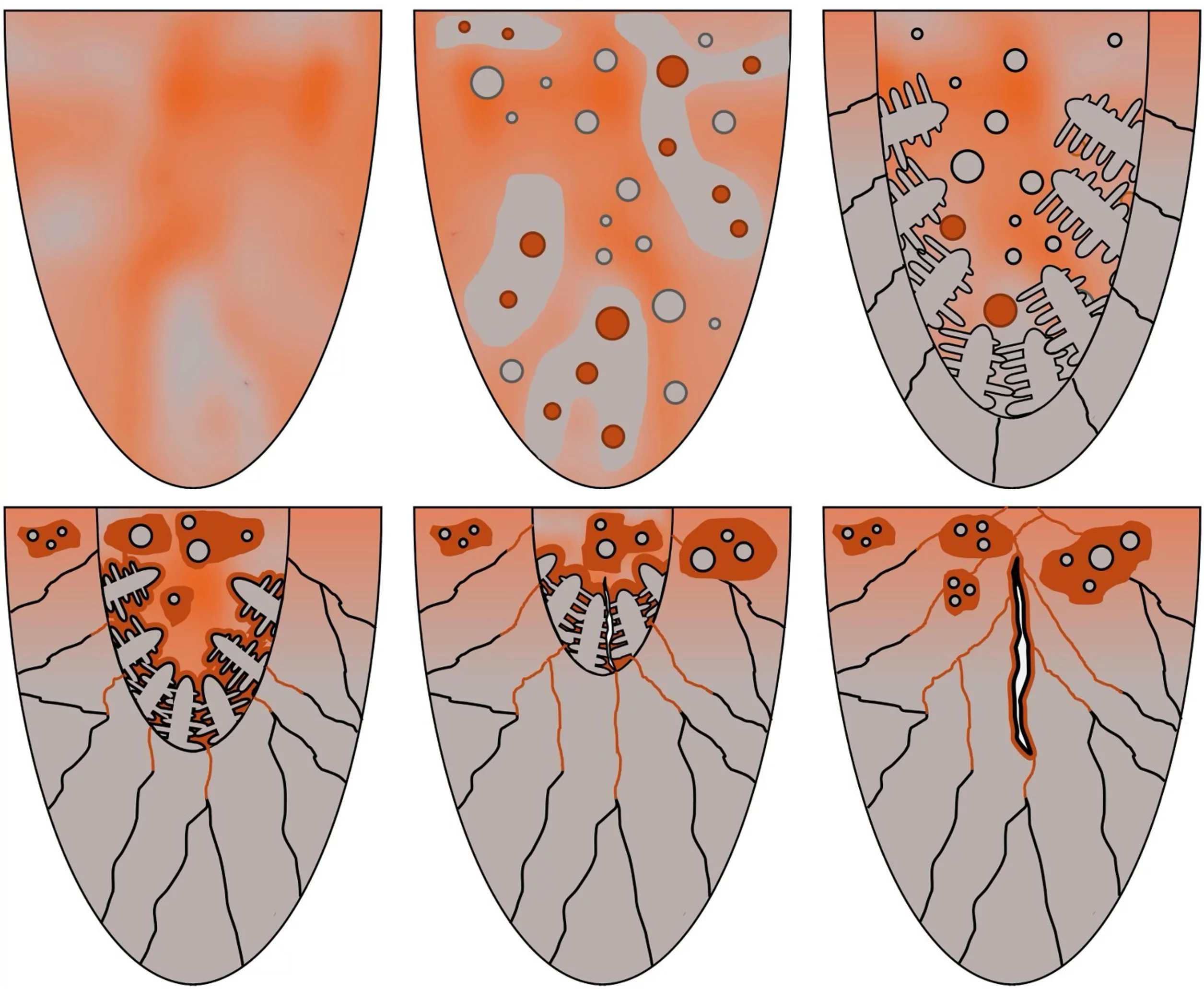Cracking at the interface between steel and copper remains a major challenge in fusion-based joining. This study identifies the dominant mechanisms of crack formation by capturing the process evolution in real time. Results highlight the role of thermal gradients, solidification dynamics, and local composition.
Steel and copper are widely used materials in manufacturing, often side-by-side in electrical, thermal, and structural applications. But joining them by fusion-based techniques like laser welding or additive manufacturing remains a persistent challenge. Their vastly different thermal and metallurgical properties — especially their melting temperatures, thermal conductivities, and mutual solubilities — cause severe stresses and interfacial instabilities during processing. The result? Cracks.
These cracks don’t just appear randomly — they reflect complex interactions between melting, solidification, and local chemistry. Prior studies have proposed various explanations for cracking in the steel-copper system — from thermal stress and liquation to solidification-related issues and chemical embrittlement — yet definitive experimental evidence has been lacking. This ambiguity stems from the difficulty of observing crack formation as it occurs.
Watching Cracks Form in Real Time
In this study, researchers used operando synchrotron X-ray radiography and diffraction to follow crack formation as it happened during laser processing of stainless steel–copper joints. Unlike conventional methods, which look at the aftermath, this approach provided a real-time window into the evolving melt pool, microstructure, and strain state.
This time-resolved characterization allowed the team to disentangle the different mechanisms responsible for failure — showing that cracking is not driven by a single cause, but by a combination of metallurgical and mechanical factors.
Three Distinct Cracking Mechanisms Identified
By closely analyzing the sequence of events during fusion, the study identified three major cracking modes:
- Solidification Cracking: As the copper-rich melt solidifies, poor feeding of the mushy zone and thermal shrinkage cause gaps to open between dendrites. If the liquid can’t flow fast enough to fill them, cracks appear along grain boundaries.
- Liquation Cracking: Localized remelting at the steel side weakens grain boundaries. When the surrounding material contracts or strains slightly during cooling, these semi-molten boundaries can fail, leading to interfacial cracks.
- Metal-Induced Embrittlement (MIE): Perhaps the most insidious mechanism, this occurs when molten copper penetrates along steel grain boundaries, reducing their cohesion without full melting. This leads to brittle intergranular fracture, driven not by heat, but by chemistry.
Cracks Can Be Prevented
Crucially, the study also shows that cracking is not unavoidable. By adjusting processing conditions — particularly the energy input and melt pool geometry — it was possible to avoid excessive copper melting and reduce the stress concentrations that lead to failure. In some configurations, crack-free joints were achieved even between these highly incompatible metals.
This work provides a mechanistic roadmap for designing more reliable dissimilar metal joints, with implications for applications in power electronics, heat exchangers, and multi-material additive manufacturing.
Contact
Dr. Steven Van Petegem
Structure and Mechanics of Advanced Materials, Center for Photon Science
Paul Scherrer Institute, Forschungsstrasse 111, 5232 Villigen PSI, Switzerland
Telephone: +41 56 310 2537, e-mail: steven.vanpetegem@psi.ch
Original publication
Deconvoluting cracking mechanisms in fusion processing of steel-copper multi-materials via Operando X-ray characterisation
Andaç Özsoy, William A. Hearn, Steve Gaudez , Rijuta Jeswani , Yunhui Chen, Alexander Rack , Zoltan Hegedüs, Nicola Casati, Roland E. Logé and Steven Van Petegem
Virtual and Physical Prototyping 20, e2526798 (2025)
DOI: 10.1080/17452759.2025.2526798


